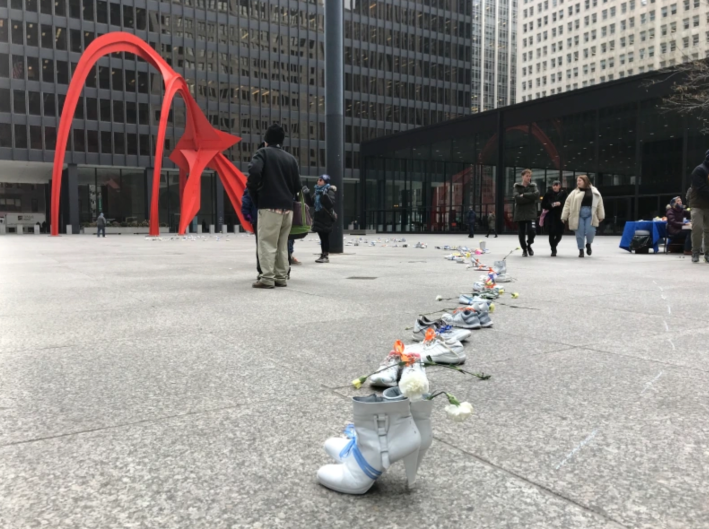Yesterday was annual World Day of Remembrance for Road Traffic Victims. Last Sunday there was a particularly tragic reminder of the potential for automobiles to cause death and destruction, as a man intentionally drove an SUV through a Christmas parade in the Milwaukee suburb of Waukesha, Wisconsin, killing six people and injuring dozens more. That made this year's observation of the memorial event particularly salient.

During non-pandemic times, the Chicago Department of Transportation has marked the occasion by displaying dozens of white shoes representing people killed by traffic violence. This year CDOT instead created a program for the local cable-access network on independent CAN TV. The broadcast feature segments by the transportation department and the Belmont Cragin-based community development organization the Northwest Center, which is a partner in the city's Vision Zero effort to eliminate serious and fatal crashes by 2026. But since CDOT previously reported that traffic fatalities on Chicago streets increased by 45 percent last year, sadly our city has been moving in the wrong direction to achieve that goal.
The World Day of Remembrance officially occurs every third Sunday in November in memory of the many millions injured and killed by drivers, although CDOT marked the event two days later. The department noted that motorists seriously injure or kill more than 2,000 people are in traffic crashes in Chicago each year, with an average of five people seriously injured each day and one person killed every three days.
“World Day of Remembrance is important in Chicago and in cities across the globe,” said CDOT Commissioner Gia Biagi in a statement. “Vision Zero reinforces the notion that we can reduce violence from traffic crashes that cause fatalities and serious injuries to zero. We know it is possible – not only in the cities across the globe that have done it, but right here in Chicago.”
CDOT says it is using $10 million from the Chicago Works infrastructure funding program this year to implement 400 pedestrian safety projects across the city, in addition to 300 projects in 2020. These include infrastructure like pedestrian islands, sidewalk extensions and other traffic calming strategies.
The department highlighted its Vision Zero Chicago Action Plan, which identified 43 High Crash Corridors and eight High Crash Areas in the city. Of the High Crash Areas, seven of the eight are on the West, Northwest, and South sides, and one is downtown. CDOT is currently collecting community input in Northwest and South side communities like Belmont Cragin, Humboldt Park, Englewood, and Washington Park.
To learn more about the Vision Zero Chicago, go to http://visionzerochicago.org/.




